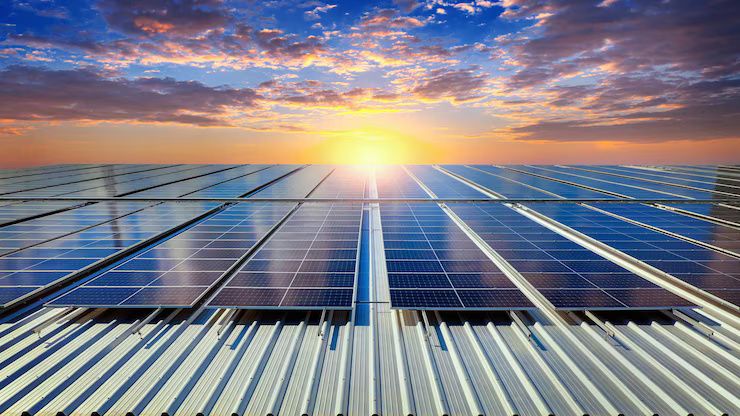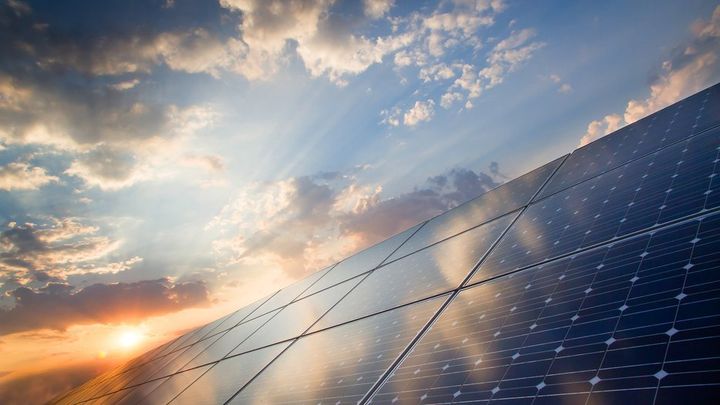When the global pressure on permanent energy is intensified, the installation of the solar panel becomes a practical and popular alternative for both the owners and the businesses in the house. It not only reduces electricity bills, but also contributes to environmental protection. Whether you are in an urban apartment, run a rural house or a factory, it is important to understand the installation process to make a smart investment.

Large advantages of installing solar panel
-
Reduction in electricity bill
When installed, solar panels can significantly cut monthly power costs. -
Energy power
The solar system allows you to generate your own power and reduce the dependence on public networks. -
Official incentive
Most governments provide tax credit, discount or grants to make businesses cheaper. -
Increase in property value
Home with solar energy systems often has high resale values. -
Environmental impact
Solar energy is clean, reduces carbon emissions and does not produce harmful pollutants.
Solar panel installation
-
Evaluation of the site
A technician is considering your place to check sunlight, roof angle and available space. -
Energy use analysis
Your historical power consumption is reviewed to determine the size and type of the required system. -
System Design
Depending on your needs, an engineer designs an system that matches the roof structure and production goals. -
Permission and paperwork
Installers help ensure the necessary permits, net measurement applications and possible grant requirements. -
Installation of growing system
A ranking system has been installed earlier, followed by solar panels. -
Electric cabling and converter layout
Wiring panels are connected to a converter, which converts solar (DC) into usable force (AC). -
Net connection and test
When attached to the grid (or a battery in the off-net system), the system for execution and safety is tested. -
Monitoring and maintenance
Many systems come with apps to track demonstrations and alerts for any problem.
Types of solar panel installations
-
Grid-Tier System
most common; The audience is connected to the network. Further energy can be returned to the network via web measurement. -
OFF-GRIND SYSTEM
Used in remote areas. A battery involves a battery to store power for night time or shooter. -
Hybrid system
Connects both: Internet connection with better reliability and battery backup for better storage. -
Ground mounted system
Ideal for large properties or companies where roofs may not be viable. -
The building purchased solar cells (BIPV)
The panels have a clean shape with double functionality integrated in ceilings or fronts.
Important ideas before installing solar panels
-
Roofing position
Older or damaged roofs may require repair or reinforcement before the growing panel. -
Orientation and kinematography
The panels work best when facing the sun (south of the northern hemisphere) with shading from trees or buildings. -
Local climate
Even in areas with clouds or rainy season, solar panels can work effectively with a correct position. -
Financial planning
While installation may require a pre -investment, financing options such as loans, leases or EMI are often available. -
Supervisory requirements
Permissions, safety standards and construction codes vary by country and region. It is necessary to follow local rules.
Government rules and subsidies (eg)
India:
Central government subsidies up to 40% for roof systems.
Web measurement policy allows users to earn credit for surplus energy.
USA:
Federal Solar Tax Credit (ITC) gives 30% deductions on the installation costs.
State -level discounts available in California, New York and others.
Japan:
Encouragement for both FID-in-toll rates and both residential and commercial layouts.
Smart inverter requirements for network integration.
EU:
Financing through the European Union Green Agreement for Solar cell plants on public and private buildings.
Mandatory sunroofs in new buildings in some countries.
Solar panel installation planning
-
Solar panel calculator: Estimate, savings and return.
-
Sun Path Tracker: Solar exposure maps on your property.
-
Roof analyzer tools: Scan the type and angle of the roof using satellite images.
-
Net measurement Qualification Control: Shows how much you can earn.
-
Permonger wizards: Step by step match guidance for local authorities.
Questions about real world
Q1. How long does the solar panel installation take?
Usually 1-3 days for residential systems. Commercial projects can take a few weeks based on size.
Q2. Do I have to change my roof before installation?
If your roof is near the end of life (20+ years), it is recommended to change it first.
Q3. Will my house still have power during the power outage?
Only if you have a battery safety copying or a system outside the grave. The online systems are closed during power outages.
Q4. How many times do I need to clean solar panels?
It is usually sufficient twice a year until you live in dusty or contaminated areas.
Q5. Can I install a solar panel myself?
The DIY set is present, but using licensed professionals is safe and more efficient due to compliance and warranty problems.
Practical tips for a smooth installation of solar panel
-
Select certified installers with good reviews.
-
Make sure the stated value includes warranties, converters, cable and surveillance systems.
-
Discuss future scalability if you may need more panels later.
-
Compare at least three quotes before ending.
-
Check if your homeowner association allows the roof installation.
Final thoughts
Installing solar panels is a strategic step towards energy efficacy, cost savings and environmental responsibility. With the right plan, website evaluation and a certified installer, the process can be smooth, rewarded and ready for the future.
Solar panel installation not only improves one house - this is an energy investment.







